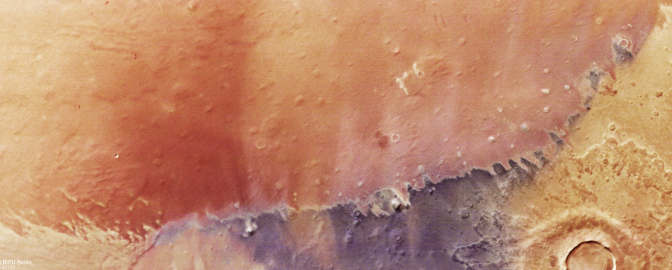Who gets to use JWST and what's it like?

Written by
Jason Davis
August 26, 2022
Scientists around the world are lining up to use NASA’s James Webb Space Telescope. The observatory, which opened for science observations on July 1, has already delivered some stunning images of the Universe. With so many amazing things waiting to be known and a finite number of telescope hours to go around, how do scientists book time on JWST, and what’s it like to use it?
While it’s easy to envision telescope users dramatically clicking on a computer screen to aim the telescope at some faint celestial object, the actual process involves peer-reviewed proposals, careful planning, and text-based computer scripts. The process may be understated, but the real drama lies with the results, in pretty pictures that are unlocking the secrets of the Universe.
Who can use JWST?
Anyone can use JWST, providing they have a pitch for telescope time that meets the approval of their peers. With the exception of scientists directly involved with the project, most would-be JWST users apply for time through the General Observers program, or GO.
“People propose, saying, ‘Here's the science I want to do,’ and it's judged in peer review,” said Neill Reid, the associate director of science at the Space Telescope Science Institute (STScI) in Baltimore, Maryland.
STScI, which manages and operates JWST and the Hubble Space Telescope, accepts proposals in one-year intervals called cycles. The winning cycle 1 proposals were announced months before JWST even launched, and cycle 1 observations started after the telescope finished its commissioning process on July 1.
Cycle 2 proposals will be accepted starting on Nov. 15, with a due date of Jan. 27, 2023. Observations will begin in mid-2023.
JWST’s first year of operations will be slightly different than subsequent years: Not all of its time was allocated to GO users. Two additional blocks of time are reserved to demonstrate the telescope’s capabilities and reward scientists who spent years working on the project.
These “guaranteed time” observations, made by people who helped construct, commission, and calibrate the telescope's instruments, will target everything from Solar System objects to faint galaxies, using every science instrument and filter available.
“The results will shake out bugs, refine data processing techniques, record the telescope’s initial performance, and collect sample data,” said Heidi Hammel, the vice president for science at the Association of Universities for Research in Astronomy, which manages STScI. As an interdisciplinary scientist for JWST, Hammel has 100 hours of guaranteed time for planetary science observations (she is also the vice president of The Planetary Society). “The guaranteed-time programs will help other scientists plan their observations,” she said.
How to propose for JWST GO time
Would-be JWST users can’t just type up an idea to use the observatory and then email it to STScI. Instead, they must use the Astronomer's Proposal Tool, or APT. This free software bundles up everything from a description of the science questions to be answered to the exact settings for the telescope’s science instruments.
A suite of related tools show proposers simulated data and help calculate parameters like exposure time. The exposure calculator even computes overhead time, which accrues as the telescope pauses to move and change filters, for example.
“With the Astronomer's Proposal Tool, you actually go into an incredible amount of detail to specify how you want the observations to be made,” said Christine Chen, an associate astronomer at STScI. “So essentially the institute should be able to take your APT file and execute your program right away.”
Proposals also include a proposal narrative, which describes why the observation is important, how the resulting data will be analyzed, and why JWST is the optimal tool for the job.

Picking the lucky few
Sifting through JWST proposals and picking the best is a job for the Telescope Allocation Committee, or TAC.
For cycle 1, more than 200 scientists spent several weeks narrowing 1172 proposals down to the 286 that were accepted. TAC members review proposals that match their area of expertise: An exoplanet expert would evaluate exoplanet proposals, for example.
An important part of the review process is ensuring that no bias slips in. Reviewers receive proposals that have been stripped of names and institutions, while proposers are instructed to remove all identifying information from their written pitches.
This process was first tested and implemented for the Hubble Space Telescope. Reid said that not only has it helped mitigate gender bias, it has improved the acceptance rate of first-time proposers from 5-10% to up to 30%. “We actually see more students getting time now,” he said.
Planning observations
Once the proposals have been accepted, scientists at STScI double-check each observing program to make sure JWST will properly collect the requested data.
“We have program coordinators and also instrument scientists that will go through and look at people's programs to make sure, essentially, that they make sense, that people aren't trying to use the telescope in a way that would return bad data,” said Chen.
Scheduling the observations requires a delicate dance. JWST only sees 39% of the sky at a time — an area known as its field of regard — as it keeps its sunshield facing the Sun, Earth, and Moon. It takes six months for the observatory to see every potential observing target in the sky as it travels around the Sun while orbiting the L2 point 1.5 million kilometers (932,000 miles) from Earth.
Some events like exoplanet transits can only be scheduled at precise times. Telescope operators must also carefully manage JWST’s data recorders, which only hold 65 gigabytes of data at a time. Data is cleared from the recorders during downlinks, which happen every 12 hours, but the team must make sure not to schedule multiple data-heavy observations next to one another.
Taking all of this into account, STScI planners create a rough, one-year schedule, assigning each JWST proposal an estimated timeframe that might range from a week to months. Next, telescope operators finalize weekly observing schedules that are optimized to keep JWST from moving around more than necessary, such as pivoting back and forth across its entire field of view. The telescope turns on each axis by spinning reaction wheels. These wheels must occasionally be spun down and reset using the observatory’s thrusters. The thrusters require fuel, which must be conserved to ensure the observatory can operate for a long time.

Making observations
After months of proposals, reviews, and scheduling work, it’s time for JWST to make its observations. Technicians at STScI convert the telescope’s weekly schedule into a computer script, and upload it to JWST via NASA’s Deep Space Network.
“It's basically a computer script with a set of commands that gets uploaded once a week, when we're running routinely,” said Reid. “So there'll be a long set of commands sent up to the telescope saying, ‘You need to observe this. Then you need to slew to that, and then slew to that.’”
Proposers receive an email when their observations have started. There’s also an independently created Twitter bot that posts what the observatory is looking at, based on the public schedule.
Controllers are only in touch with JWST every 12 hours. If the telescope runs into a problem, it might go on to the next scheduled observation rather than sitting idle awaiting instructions (observations that are skipped due to technical problems get redos). If a problem is severe enough, the observatory will put itself in safe mode and wait for instructions.
Within a day or two, the observation data is downloaded to Earth and transferred to MAST, the Mikulski Archive for Space Telescopes. There, observers can finally see the results of their proposals, captured by a telescope floating in deep space.

Publishing the data
Everything captured by JWST is publicly available in MAST — just not right away.
Scientists who use JWST through the General Observers program typically have, by default, a year of exclusive access to their data. This gives them time to study the results and write academic papers without the fear of having their findings scooped.
Some non-GO data — from those first-year programs meant to demonstrate the telescope’s capabilities and reward project scientists — is available to the public right away. Nevertheless, a non-scientist visiting MAST will have a hard time making sense of the data.
Chen is part of a team using JWST to directly image exoplanets. She said that the group is already working on a paper to announce their findings. Like the other JWST images that have been released, the public is sure to be dazzled by the results.
“All I can say is, it is spectacular and gorgeous and it knocked my socks off when I saw it,” she said.
Support our core enterprises
Your gift today will go far to help us close out the year strong and keep up our momentum in 2026.
Donate

 Explore Worlds
Explore Worlds Find Life
Find Life Defend Earth
Defend Earth

